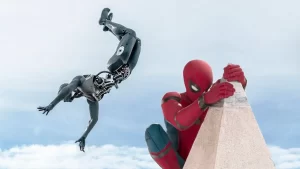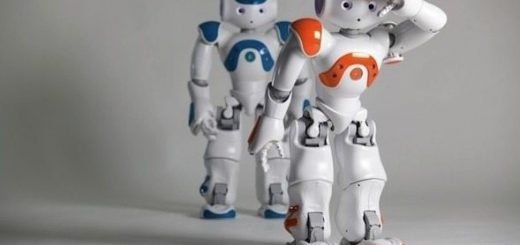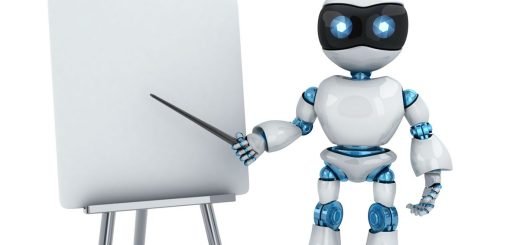Disney robot Stuntronics features, importance and Disney robot shows
Stuntronic robot uses onboard sensing to perform combinations of flips, twists and poses with repeatability and precision, It is a simple stunt-double animatronic, Combining advanced robotic technology with the exploration of untethered dynamic movement, It is created by Walt Disney Imagineering in the United States in 2018, its type is Entertainment and Humanoid.
Stuntronic robots
Flying robots are the future, the new acrobatic robotics is called Stuntronics, These human-sized robots perform death-defying acrobatic tricks by launching off a swing and computing the rotations, and spinning in the air as they fly. The form of Stuntronic robots is now significantly more humanoid, taking on the size and shape of human performers, They feature on-board gyroscope arrays and accelerometers to help accomplish their stunts.
Stuntronic robot features
The Stuntronics robot has an on-board accelerometer and gyroscope arrays supported by laser range finding, it is a humanoid robot, taking on the size and shape of a performer that could easily be imagined clothed in the costume of one of the Incredibles, or someone on the Marvel roster. The Stuntronics robot can be slung from the end of a wire to fly through the air, controlling its pose, rotation, and center of mass to not only land aerial tricks correctly but to do them on target while holding heroic poses in midair.
Disney unveiled the Stuntronic robot which is a new type of animatronic: a Stuntronic, the Stuntronic robot is a robotic stunt person that is autonomous and it can self-correct as it performs aerial stunts, Stuntronic robot can perform more aggressive feats that may be too difficult for humans, like animatronics of yore, they can do the same move over and over.
The Stuntronics robot can fly across space on its own, It can calculate trajectories, and strike poses with its onboard hardware, It can hit a target dead on every time. Stuntronic robot knows when to tuck its knees to perform a somersault when to pull its arms to twist, and when to slow down its spin to make sure it sticks that perfect landing.
Stuntronics is a 90-pound human-robot that is built for aerial performances, It has three sections and two flexible joints which enable it to form a tucked position through pneumatic cylinders operated by pressurized air, The microcontroller and two sensor systems allow the Stuntronics robot to determine what its body is doing while in the air.
Stuntronics robot comes with an on-board accelerometer and gyroscope arrays supported by laser range finding, So, It can rotate and perform while holding a pose in the air, Stuntronics robot has three lasers to measure the distance to the ground, which enables the Stuntronics robot to make necessary calculations to account for different variables, such as air pressure or joint friction.
A Stuntronic robot can convince you it can be a being of action and dynamism, This flying stuntman making a superhero pose is a robotic Stuntronic, Stuntronics grew out of research by Disney that led to Binary Robotic Inertially Controlled bricK (BRICK), Its ability to stick the landing led to the development of Stickman, Stickman has laser rangefinders and could emulate acrobatic motions.
The Disney “Stuntronic” robot soars through the air, Stickman is a 7-foot-tall swinging robot performer who weighs around 40 pounds, it can execute backflips, and decide on its own when to untuck and land flat on its back, Stickman was an early version of a fearless robotic performer, while the newest artificial acrobatic figure that Disney has shown off is in a category they call Stuntronics, Stuntronics robots can achieve feats that would be too difficult or dangerous for a human to do, Stuntronics robot can perform over and over without getting tired.
Stickman has an IMU, or inertial measurement unit, which consists of accelerometers and gyroscopes, It’s the best measurement for orientation, and it offers an estimate of position. The Stickman robot needs to make that calculation because the variables can change each time it performs a stunt, Factors like the air pressure in the pistons and even joint friction can affect the outcome, Each throw is never the same.
You can subscribe to Science Online on YouTube from this link: Science Online
You can download Science Online application on Google Play from this link: Science Online Apps on Google Play
Sophia robot review, features, use, advantages and disadvantages
Ameca robot review, features, advantages, disadvantages and What can Ameca Do?
Emo robot review, advantages, disadvantages, features and What can Emo do?
Tesla robots (Optimus) review, use, advantages and disadvantages




